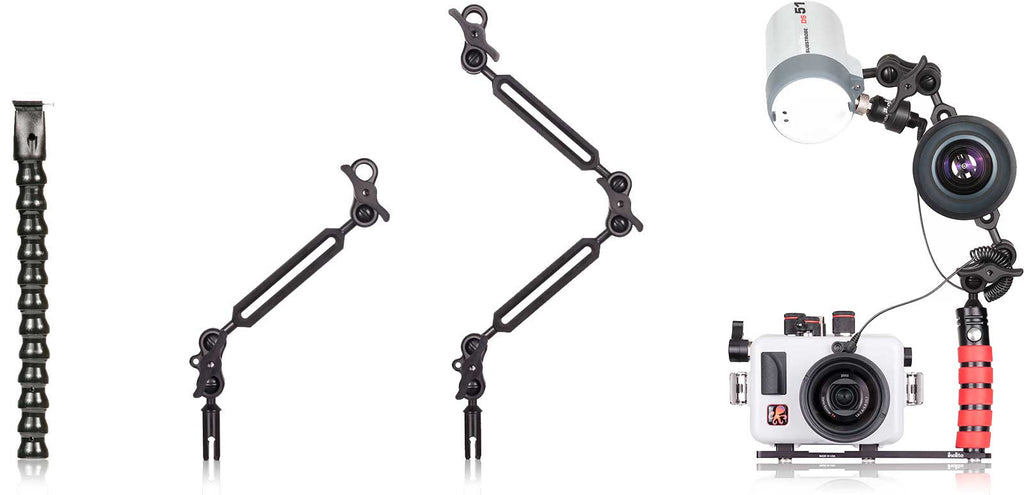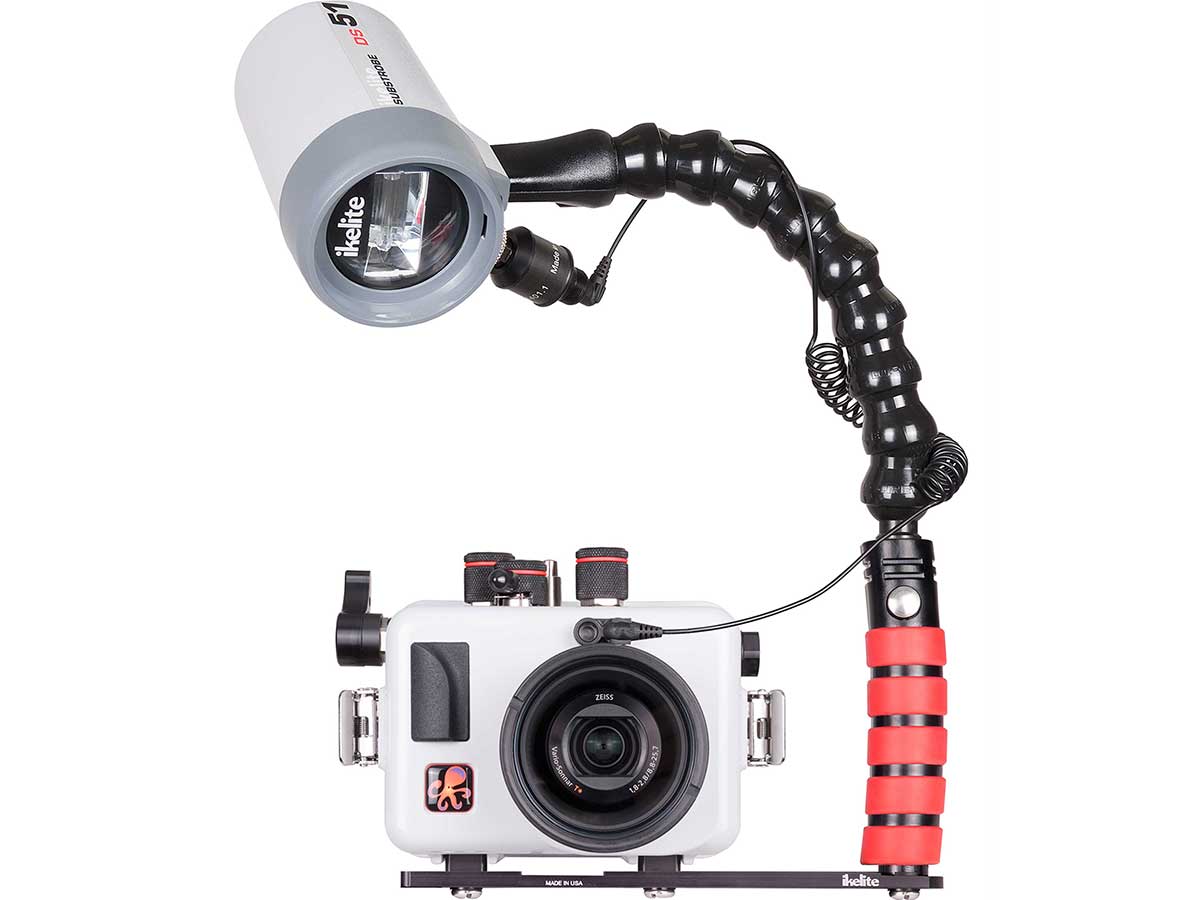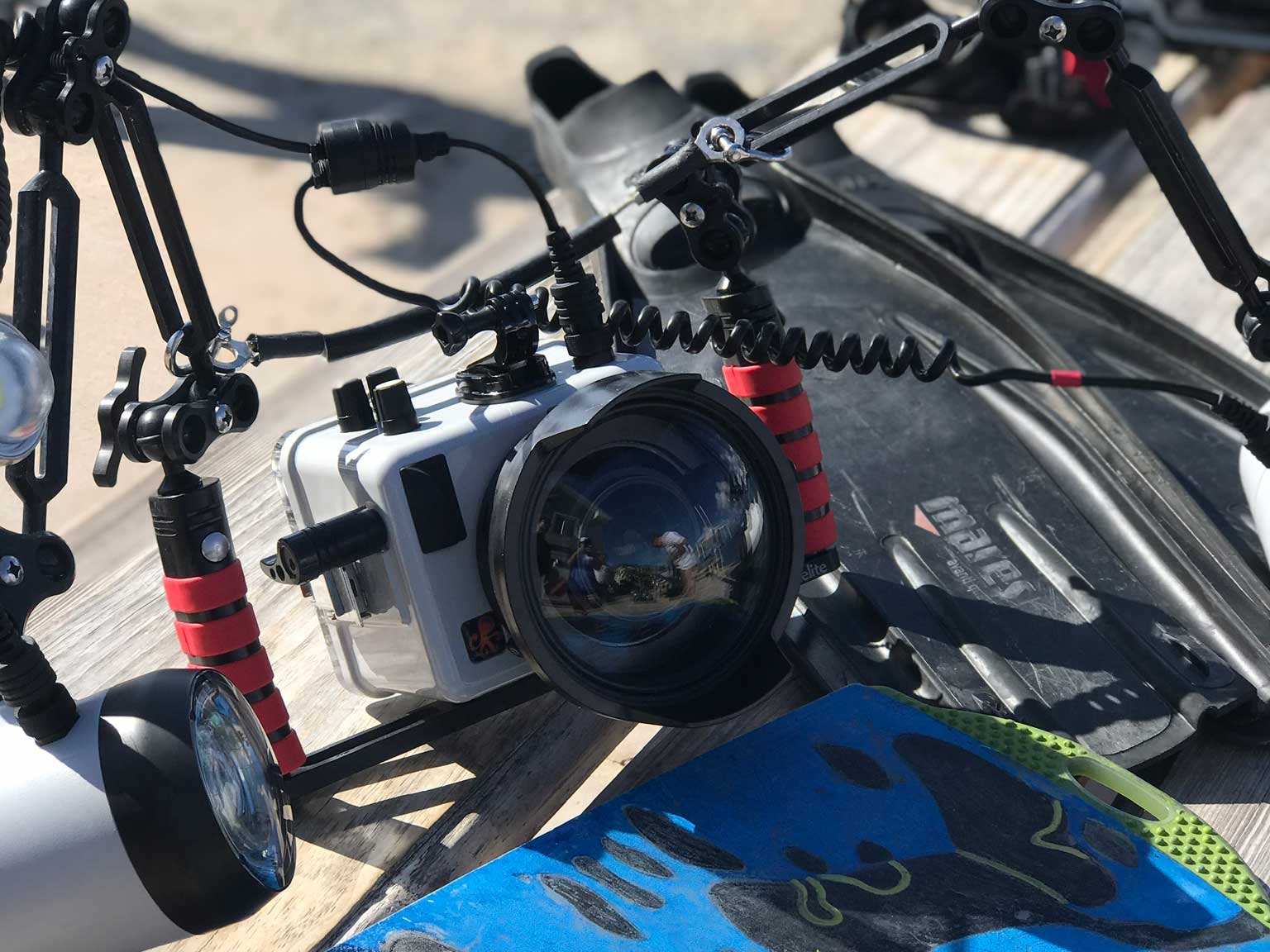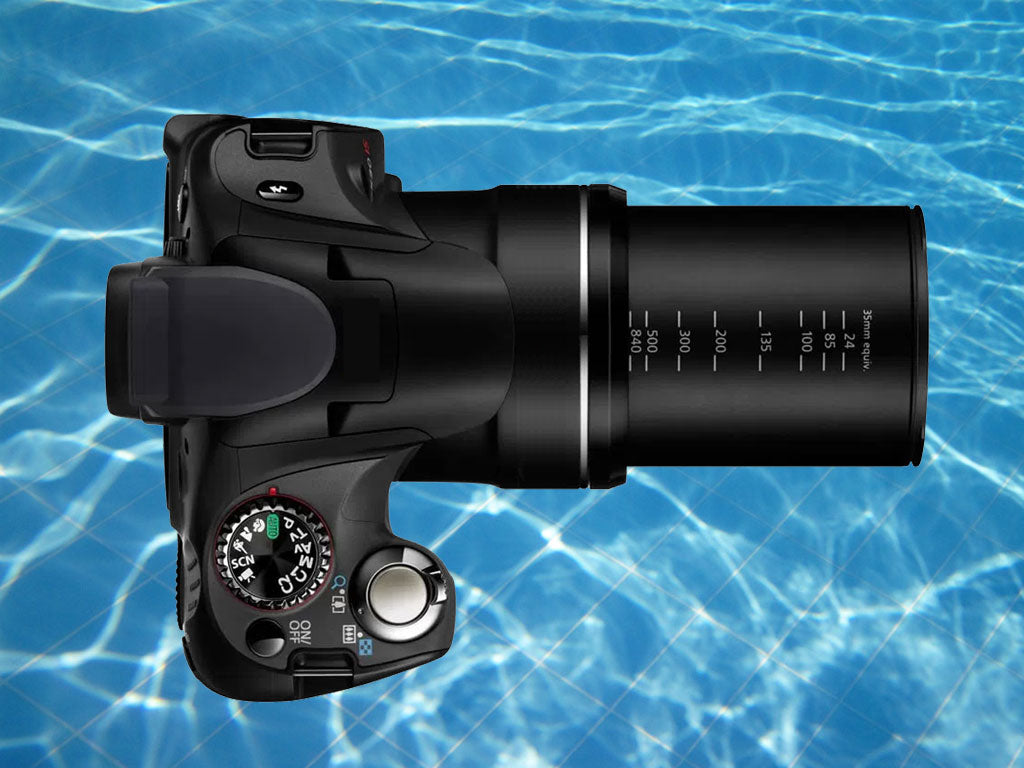The basic set-up for connecting a strobe to a fiber optic system requires four components: Strobe, fiber optic converter, fiber optic cord, and strobe arm.
Fiber optic triggering requires a separate light path for each strobe you want to fire. Each strobe requires an individual fiber optic converter and cord.
If you're using an Olympus or Panasonic camera, you may want the RC1 TTL Receiver instead of a fiber optic converter.
Read More: Choosing Strobes for an Olympus Tough Housing
Keep reading for an explanation of your strobe and arm choices.
DS51 II Strobe
The DS51 II strobe is the most popular choice for compact camera systems. It's very compact, lightweight, and accepts AA batteries. The brightness and angle of coverage are great for any compact system and perfect for macro photography.
DS160 II and DS230 Strobes
Our flagship DS160 II, DS162, DS230, and DS232 strobes are classified as professional grade strobes. Professional grade strobes have larger, circular flashtubes and reflectors for a higher quality light with or without a diffuser. Professional grade strobes have dedicated rechargeable battery packs to provide more flashes per charge and high speed shooting capabilities.
The DS160 and DS162 strobes only differ in their built-in focus light. The DS160 has a concentrated 220 lumen spot beam focus light, while the DS162 has a 2500 lumen wide angle video light.

Flex Arm for DS51
The Flex Arm is the lightest and most affordable option for connecting a strobe to your system. True to its name, the arm provides a good degree of flexibility and can be added to inexpensively. The Flex Arm supports the DS51 strobe only. A DS160-series or DS230-series strobe requires an aluminum ball joint arm.
Compact Ball Arm
Aluminum ball joint arms are the standard in professional underwater strobe photography. They provide the maximum flexibility in articulation, expandability, and easy of strobe positioning. Unlike flexible arms, ball joint arms are quiet when you reposition them and are capable of a "lightweight hold" for fast repositioning underwater. Ball joint arms also provide lots of additional mounting point locations for the attachment of accessories including top handles, video lights, and lens holders.
Wide Angle Ball Arm
An extra long strobe arm is essential for reducing backscatter and providing even lighting when shooting wide angle photography. The arm may be used as is for macro photography, or the additional arm section can be removed to reduce the size of your rig when switching to a dedicated macro set-up.

Cable Top Handle Grip
This is our favorite way to carry a system around on the surface when shooting with dual strobes. The cable grip can be attached either to the two auxiliary clamps or to the slots in the 7" ball arm segments.
Fiber Optic Cords
The fiber optic ports found on our housings are consistent with those used by SEA&SEA housings and strobes, Olympus housings and strobes, and certain Nauticam housings. INON strobes use a different connection method which requires their proprietary connector. For the best signal transmission, we recommend a high quality multi-core fiber optic cord.
Ikelite fiber optic ports accept the following cables:
- Ikelite Fiber Optic Coiled Cord # 4501
- INON Optical D Cable "Non-wireless type" L-Connector
- SEA&SEA Fiber Optic Cable (L-type) # 50107
- SEA&SEA Fiber Optic Cable II # 50128
- Olympus UW Fiber Optic Cable PTCB-E02
- Nauticam Optical Fiber Cable # 26211 Nauticam to INON
- Nauticam Optical Fiber Cable # 26212 Nauticam to SEA&SEA
Why Ikelite?
Our strobes are designed from inside to out specifically for underwater photography. We are the only underwater strobe which is 100% made in the USA by experienced divers. Our staff is easily accessible for any advice and support you need.














